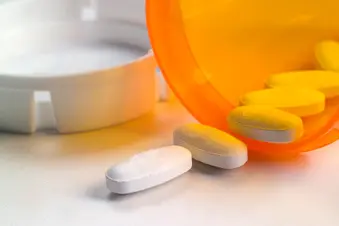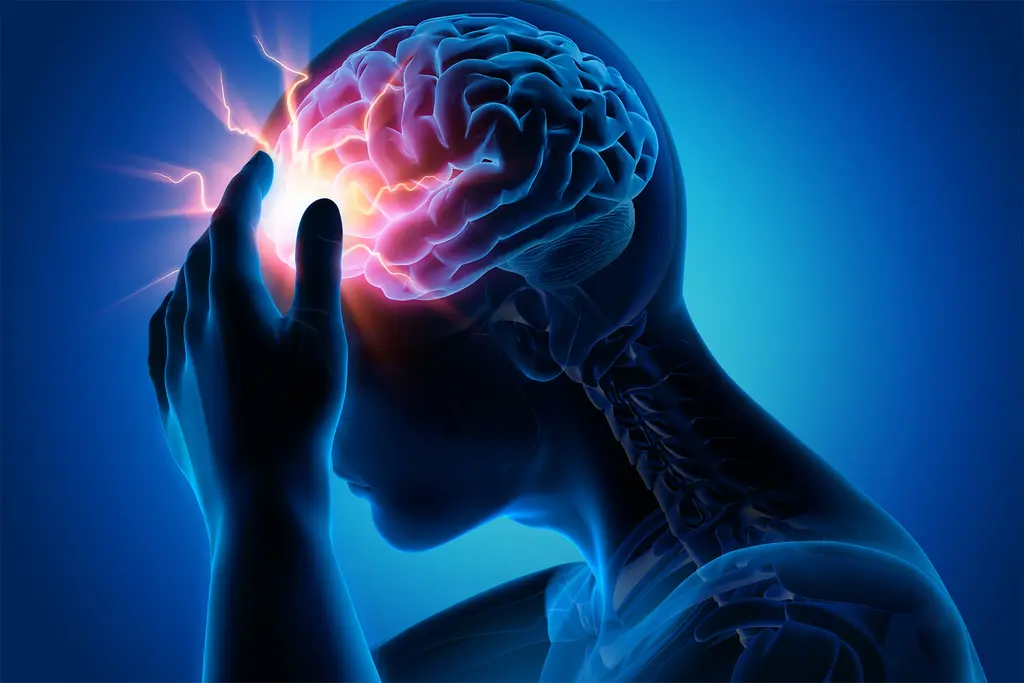
Fast-acting migraine medication can wipe out a headache. But according to Christopher Gottschalk, MD, director of the Yale Headache & Facial Pain Center, this pain-free possibility often comes as a surprise to many who live with the neurological condition. The speed and success of each drug may vary with each attack.
“But one of the things I emphasize to people is I want to be sure that when you treat a migraine, you feel totally better in an hour or two,” he says. “And I say that to people every single day.”
Total or partial relief may come well before the 2-hour mark for some. Ask your doctor to go over the pros and cons of all your treatment choices. They’ll help you find the medicine that works best for your symptoms.
What Medications Treat Migraine?
If you get only mild head pain every now and then, it’s worth asking your doctor if acetaminophen or high doses of nonsteroidal anti-inflammatory drugs (NSAIDs) like aspirin, ibuprofen, or naproxen might be right for you.
But people with migraine who get good results from general painkillers are “few and far between,” says Anne Yacoub, MD, an assistant professor of neurology and co-director of the Johns Hopkins Headache Center.
The good news is there are a growing number of migraine-specific drugs used to ease headaches after they start. These medications target specific nerves and pathways that stop or reverse the migraine process. You may hear your doctor call this acute treatment.
Here’s a breakdown of drugs used to treat acute migraine headaches:
Triptans. These drugs act on a brain chemical called serotonin. They also cause your blood vessels to narrow and likely lower levels of calcitonin gene-related peptide (CGRP). CGRP is a pain-related protein that plays a big role in triggering migraine attacks.
All triptans work in a similar way. But it’s hard to predict which one will work best. You may need to try more than one.
Examples of triptans include:
- Almotriptan (Axert)
- Eletriptan (Relpax)
- Frovatriptan (Frova)
- Naratriptan (Amerge)
- Rizatriptan (Maxalt, Maxalt-MLT)
- Sumatriptan (Imitrex)
- Zolmitriptan (Zomig ZMT, Zomig)
You can take triptans as a pill, shot, or nasal spray. But some experts say the shot is your best bet for fast and reliable results.
Triptans are generally considered safe. But they usually aren’t recommended for folks with:
- Uncontrolled high blood pressure
- Certain heart and blood vessel conditions
- A higher risk of a heart attack or stroke
In terms of side effects, you may not have any. But some people feel:
- A squeezing or tingling sensation
- Chest pain or pressure
- Fatigue
- Dizziness
- Nausea
Tell your doctor if any of the above symptoms bother you. They may change the dose or switch you to a different migraine medication.
Gepants. Also called CGRP antagonists, gepants work by blocking calcitonin gene-related peptide. As mentioned earlier, CGRP molecules are released during a migraine attack and can prolong pain. Gepants may not act as fast as some other migraine meds, but they tend to come with fewer side effects and health worries. For example, they don’t constrict your blood vessels. That makes them a safer alternative to triptans if you have concerns about your heart and blood vessels.
There are three gepants approved for acute migraine treatment. They are:
- Rimegepant (Nurtec ODT)
- Ubrogepant (Ubrelvy)
- Zavegepant (Zavzpret)
Rimegepant and ubrogepant are taken orally as a pill or tablet that dissolves under your tongue. Zavegepant is used as a nasal spray.
Ditans. These drugs target very specific serotonin receptors that play a role in migraine pain. But unlike triptans, they don’t narrow your blood vessels. Lasmiditan (Reyvow) is the only ditan approved for acute migraine treatment. Talk to your doctor about it if you:
- Have a heart or blood vessel condition
- Can’t handle side effects from other migraine meds
- Don’t respond well to triptans
Lasmiditan can cause serious tiredness and trouble with coordination. And you shouldn’t operate any machines or equipment for up to 8 hours after you take it. Also, it can only be taken once every 24 hours.
Dihydroergotamine. Known as DHE for short, this drug targets serotonin, dopamine, and some other chemicals involved with migraine. Researchers think this multi-molecule approach might be why DHE works for people who don’t respond well to triptans.
Studies show this migraine treatment may be a good choice for people who:
- Wake up with a migraine headache
- Have menstrual migraine
- Get extra pain and sensitive skin during a migraine attack
You typically take DHE as a nasal spray or shot you give yourself. But you can get treatment through a vein in your arm if you have head pain that lasts more than 72 hours.
Your doctor may give you an anti-nausea pill to take with DHE. Side effects may include worsening nausea or throwing up.
This drug may not be safe for people who have:
- Heart disease
- Uncontrolled high blood pressure
- Kidney or liver disease
You also shouldn’t take DHE within 24 hours of using a triptan.
When Do You Take Migraine Drugs?
All acute migraine drugs work best when used early during an attack. How early?
“Once the headache even slightly begins, jump on it,” Gottschalk says.
Early treatment is key for a couple of reasons. One is that symptoms like pain are easier to treat when they’re mild. But the bigger issue has to do with how these drugs act on the migraine process.
The aching and throbbing of a migraine happen when your trigeminal nerve is triggered, says Gottschalk. Drugs like triptans get rid of head pain by calming this nerve.
But without fast treatment, this irritated process can spread to nerves deeper inside your brain and nervous system. And drugs like triptans mostly work on peripheral nerves, like the kind in your face and forehead.
When it comes to taking fast-acting migraine drugs, “Basically, the door is open for a couple of hours in the beginning of an attack,” Gottschalk says. “And then it pretty much closes.”
Which Migraine Medication Is Right for You?
There are some key questions to guide you and your doctor toward the right medication. Three things Yacoub likes to ask people with migraine are:
- Does your headache pain ramp up really quickly?
- Do you get nausea early during an attack?
- Do you often wake up with a headache?
If people answer yes to any of those things, Yacoub says shots and nasal sprays tend to be a good first choice. That’s because these non-oral forms get migraine medication into your bloodstream faster than a pill and bypass your gut.
But the right migraine medication for you depends on several things. Some topics to bring up with your doctor are:
- If your headache pain builds slow or fast
- If you have headaches that last a long time
- Whether you’d rather take a pill
- Your age and other health conditions
You’ll also want to tell your doctor about any medication you’ve tried before that hasn’t worked.
When to Change Your Migraine Medication
In general, acute treatment shouldn’t be used more than two or three times a week. One worry is something called medication overuse headache. That’s the idea that symptom-relieving drugs may cause more headaches over time.
There’s no strong evidence that all migraine-specific drugs lead to medication overuse headache. In fact, gepants are a type of acute treatment that can also be used as preventive therapy. But according to Gottschalk, the main concern isn’t that taking too much of these will bring on more migraine attacks down the road.
“The conversation really should be that if you consistently have to treat your headaches more than three times a week, apparently we’ll need to do more,” he says.
Talk to your doctor about different acute treatment or preventive therapy if you have:
- More than four headaches a month
- Eight or more headache days a month
- Headaches that are debilitating
- A poor response to your current abortive drugs
Good migraine prevention should not only make your migraine attacks less frequent, but also make your headaches less severe. Preventive therapy may also boost your response to abortive drugs when you do need them.
Show Sources
Photo Credit: jcphoto/Getty Images
SOURCES:
Christopher Gottschalk, MD, director, Yale Headache & Facial Pain Center; professor of neurology, Yale School of Medicine.
Anne Yacoub, MD, co-director, Johns Hopkins Headache Center; assistant professor of neurology, Johns Hopkins University School of Medicine.
UpToDate: “Acute treatment of migraine in adults.”
American Family Physician: “Acute Migraine Headache: Treatment Strategies,” “Migraine Headache Prophylaxis.”
Merck Manual: “Migraine.”
American Migraine Foundation: “What to Know About the New Anti CGRP Migraine Treatment Options,” “Dihydroergotamine (DHE) for Migraine Treatment.”
The New England Journal of Medicine: “Ubrogepant for the Treatment of Migraine.”
Headache: “Gepants,” “Dihydroergotamine (DHE) – Then and Now: A Narrative Review.”
The Journal of the American Medical Association: “Acute Treatments for Episodic Migraine in Adults: A Systematic Review and Meta-analysis.”
JAMA Network Open: “Comparison of New Pharmacologic Agents With Triptans for Treatment of Migraine: A Systematic Review and Meta-analysis.”
The Journal of Headache and Pain: “Lasmiditan mechanism of action – review of a selective 5-HT1F agonist.”
